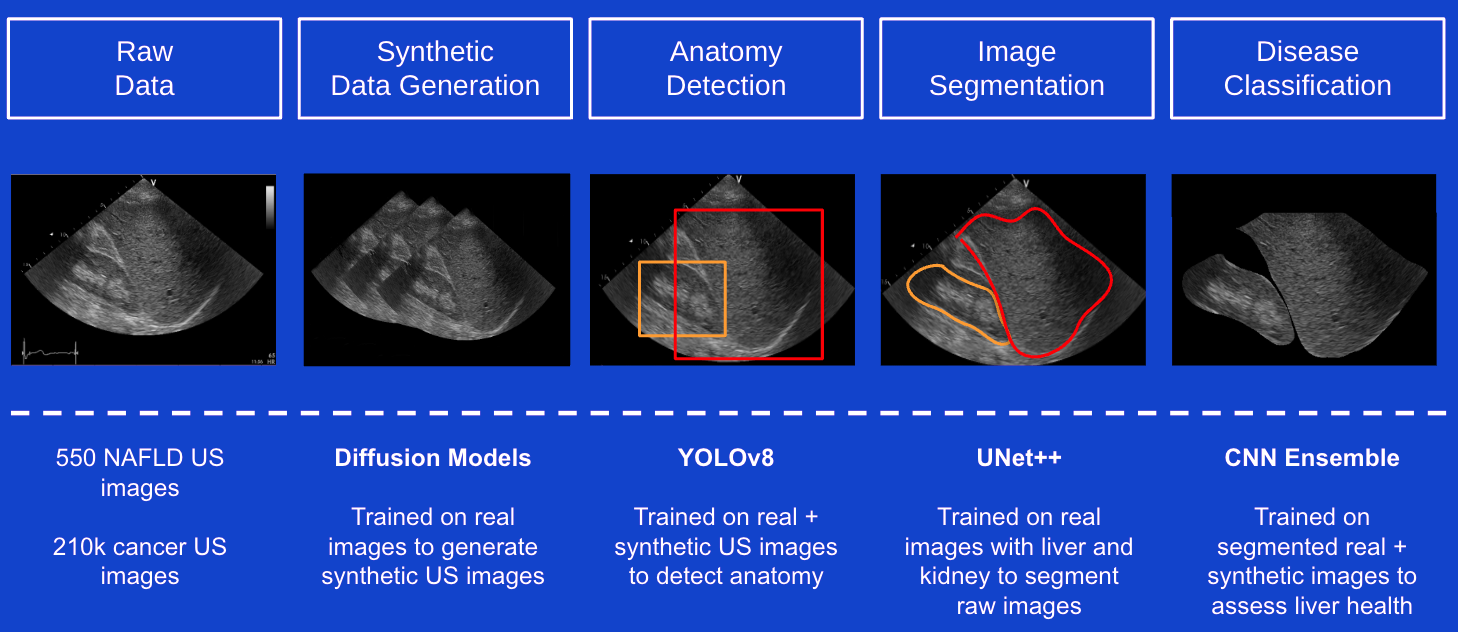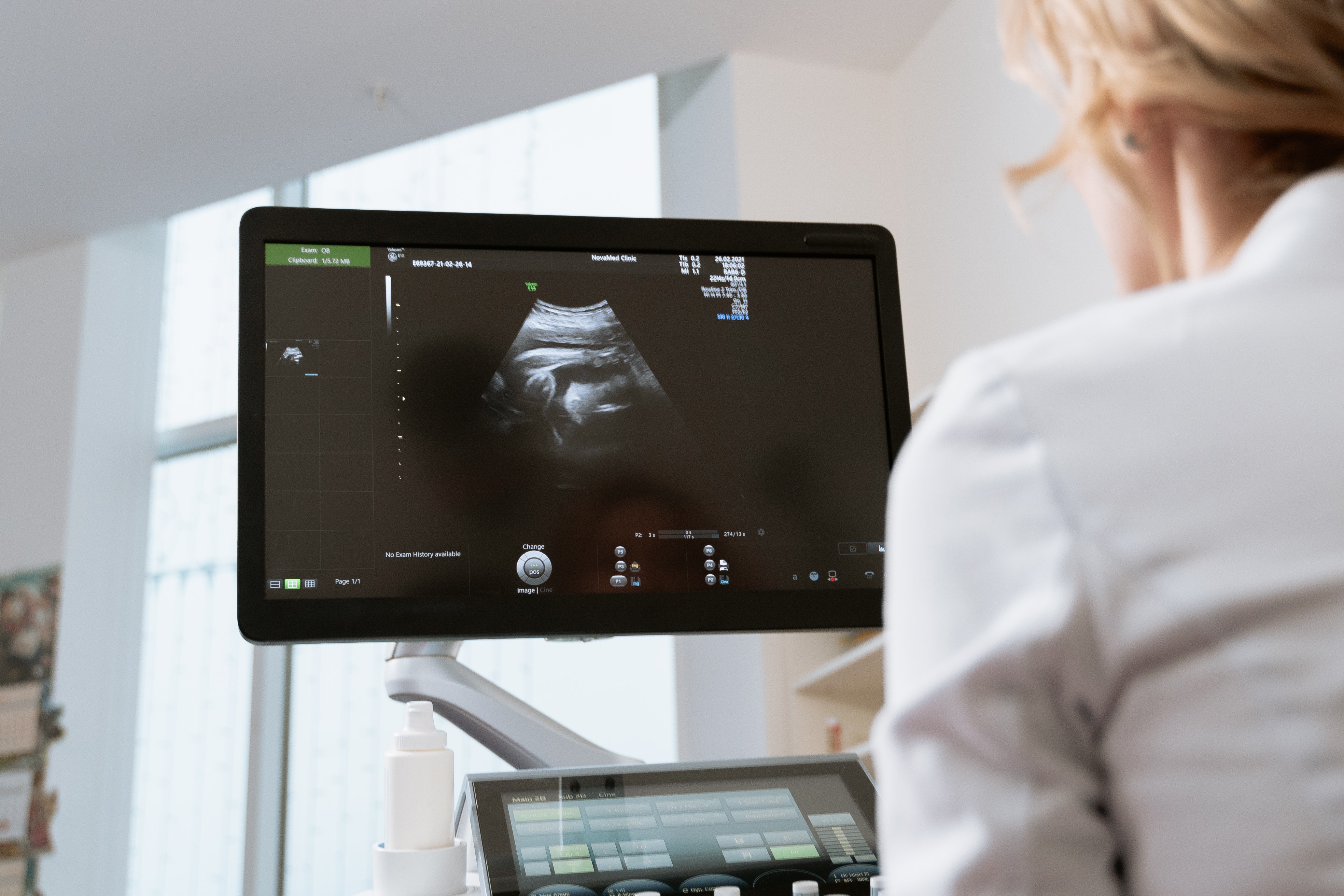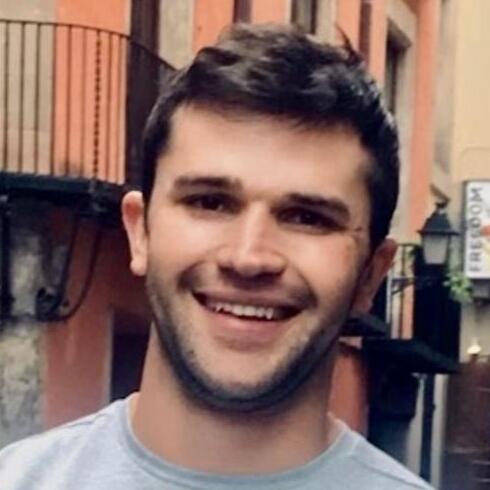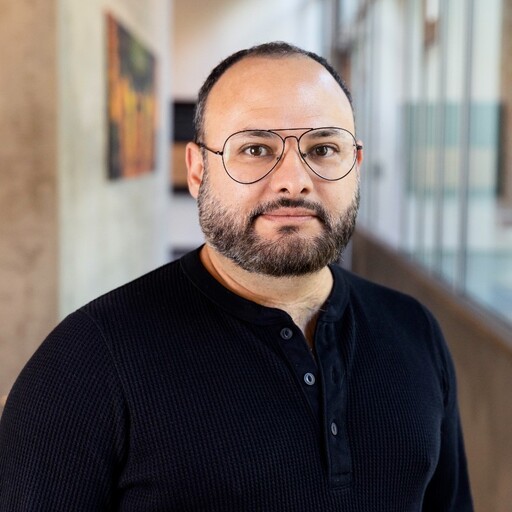Research

Our ultrasound navigation platform can identify organs, veins, and lesions in abdominal ultrasound images of the liver. It can also detect and classify the severity of non-alcoholic fatty liver disease (NAFLD). Our synthesis application generates liver ultrasound images using latent diffusion models: text-to-image, class-to-image, and semantic masks.





Our app uses diffusion models to create ultrasound images that mimic the structural anatomy of the liver.
We are researchers from the UC Berkeley Master of Information and Data Science program aiming to make an impact in the medical imaging space.




